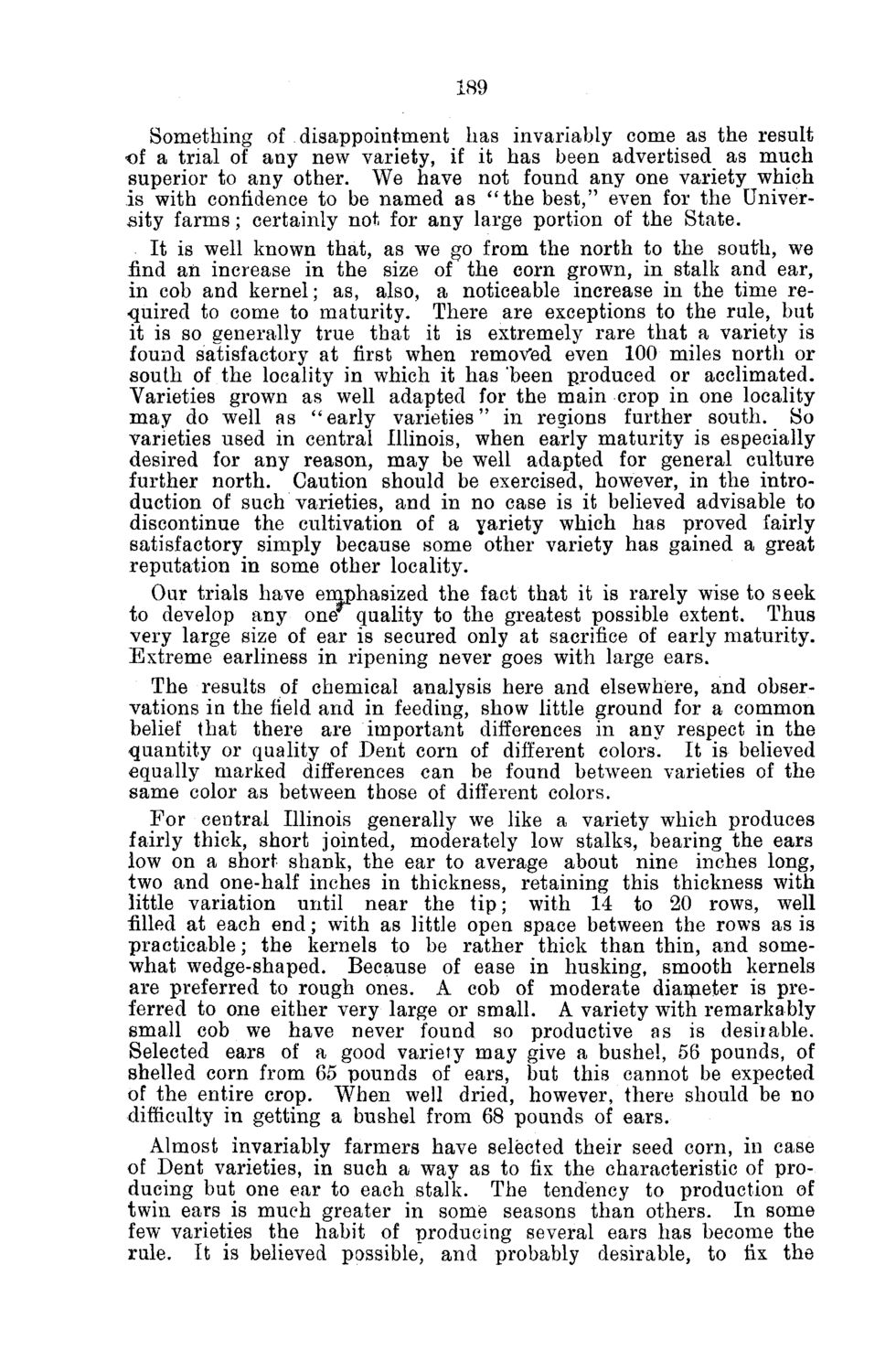| |
| |
Caption: Board of Trustees Minutes - 1886
This is a reduced-resolution page image for fast online browsing.

EXTRACTED TEXT FROM PAGE:
189 Something of disappointment has invariably come as the result of a trial of any new variety, if it has been advertised as much superior to any other. We have not found any one variety which is with confidence to be named as " t h e best," even for the University farms; certainly not for any large portion of the State. It is well known that, as we go from the north to the south, we find ail increase in the size of the corn grown, in stalk and ear, in cob and kernel; as, also, a noticeable increase in the time required to come to maturity. There are exceptions to the rule, but it is so generally true that it is extremely rare that a variety is found satisfactory at first when removed even 100 miles north or south of the locality in which it has been produced or acclimated. Varieties grown as well adapted for the main crop in one locality may do well as "early varieties" in regions further south. So varieties used in central Illinois, when early maturity is especially desired for any reason, may be well adapted for general culture further north. Caution should be exercised, however, in the introduction of such varieties, and in no case is it believed advisable to discontinue the cultivation of a yariety which has proved fairly satisfactory simply because some other variety has gained a great reputation in some other locality. Our trials have emphasized the fact that it is rarely wise to seek to develop any one quality to the greatest possible extent. Thus very large size of ear is secured only at sacrifice of early maturity. Extreme earliness in ripening never goes with large ears. The results of chemical analysis here and elsewhere, and observations in the field and in feeding, show little ground for a common belief that there are important differences in any respect in the quantity or quality of Dent corn of different colors. It is believed equally marked differences can be found between varieties of the same color as between those of different colors. For central Illinois generally we like a variety which produces fairly thick, short jointed, moderately low stalks, bearing the ears low on a short shank, the ear to average about nine inches long, two and one-half inches in thickness, retaining this thickness with little variation until near the tip; with 14 to 20 rows, well filled at each end; with as little open space between the rows as is practicable; the kernels to be rather thick than thin, and somewhat wedge-shaped. Because of ease in husking, smooth kernels are preferred to rough ones. A cob of moderate diameter is preferred to one either very large or small. A variety with remarkably small cob we have never found so productive as is desirable. Selected ears of a good variety may give a bushel, 56 pounds, of shelled corn from 65 pounds of ears, but this cannot be expected of the entire crop. When well dried, however, there should be no difficulty in getting a bushel from 68 pounds of ears. Almost invariably farmers have selected their seed corn, in case of Dent varieties, in such a way as to fix the characteristic of producing but one ear to each stalk. The tendency to production of twin ears is much greater in some seasons than others. In some few varieties the habit of producing several ears has become the rule. It is believed possible, and probably desirable, to fix the
| |